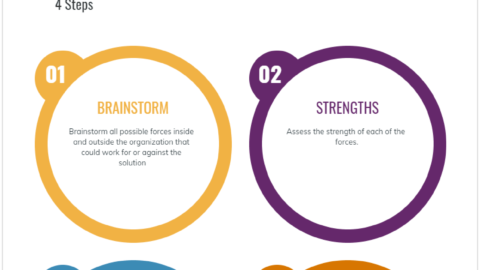Essential Guide To Creating A Project Management Workflow
Imagine getting together with your team for an upcoming project. All of a sudden, no one has any idea where to start. Does this ever feel like you and your team? Do you ever find yourself procrastinating on your tasks just hours away from your deadline? Do some of your team members ponder what they should do next in order to get the job done? No matter what type of industry that you’re in, you are most likely to do group projects that require a lot of time and effort. However, in order for things to run smoothly without delay, you and your team will need to have a plan of some sort. This is especially true if you’re new to managing projects, or if you’ve been at projects before. Chances are, projects aren’t often a walk in the park. Projects take time, money, effort, and other necessities. So yes, a little planning is needed for project management. That’s where project management workflow comes in!
Table of Contents
Believe it or not, workflows can help project teams plan, produce, and deliver projects regularly. Whether you’re strapped for time, or have plenty of time in the world, workflows can help you and your team stay on track. Workflows can prevent the chaos that might spring up from unpreparedness, procrastination, and confusion. Without the chaos, your team can stay on track, and stay focused on the ultimate goal of your project.
So, how can you pull off a project management workflow for your upcoming project? In this essential guide, we will show you what project management workflows are, why they matter in projects, and how to create them.
What Is Project Management Workflow?
Now, before you can create a project management workflow, it’s important to know what this workflow entails.
A project management workflow can be described as a carefully-planned sequence of tasks and activities that you and your team need to do to complete a project. It is a way of managing projects. Essentially, you’re creating a string of tasks that are organized in chronological order, because again, projects take time and effort. When you use such a workflow, you’ll see the following happen, depending on the project itself, and how often you do such projects:
- You’ll save time.
- You’ll improve results, or see results that you might not have hoped for.
- You’ll improve your collaboration skills.
Now, let’s talk about two different managements: project and workflow.
Project Management VS. Workflow Management
Project and workflow, believe it or not, are two different things, especially when it comes to management. Let’s dive deeper.
- Project management consists of all the ways in which you and a team can get a project done, from tasking to processing to managing a workflow. However, project management is all about flexibility and transparency for every part of your project.
- Workflow management, on the other hand, is more into the specifics than project management. In fact, workflow management outlines the steps at the exact moment. This time of management uses these specifics to complete a project or task.
But which one is better? Project management or workflow management? Well, the truth is, you’ll need both for a team project.
Why Should You Combine Workflow With Project Management?
While projects and workflows may be two different entities, in reality, they have to work together to create something amazing. When you think about it, what does a “workflow” refer to? A series of steps – a plan. Now, think about the word “project” – it’s a time-bound event that has both a purpose and a specific outcome.
So, when you combine both “project” and “workflow,” we’re talking about a roadmap that accompanies a time-bound event with a purpose and outcome. The purpose and outcome (the project itself) can only be realized when a team follows a roadmap (the workflow).
Now, believe it or not, everyone has a workflow of some sort. How? With routines. It’s part of human nature for people to have routines, meaning that they follow certain rituals, certain rules, and so on. That’s why people are no strangers to workflows. No matter what industry you’re in, you might already know how to tackle tasks (or you might not). No matter the project, you might have a good idea of how you want to tackle it (or you might not). Either way, a workflow can at least show you the way to your goal. Plus, it won’t hurt to have at least some sort of plan anyway.
Creating A Workflow
So far, we’ve talked about what a project management workflow is, and why you would need to consider project and workflow managements in one place. Now, it’s time to start creating a working workflow.
If you’re still new to the game, then you’re not alone. Creating a workflow can be overwhelming to do at first; but once you get started and get the hang of it, you’ll feel more confident in this type of work. Plus, with a team at your side, creating workflows can be a breeze.
So now, we would like to introduce you to 5 steps on how to create a solid project management workflow. Just keep in mind: While creating a workflow isn’t a one-size-fits-all task, these steps will help you stay on track when putting together a plan and fulfilling specific needs.
Make a list
Yes, this should be your first step when creating a project management workflow. Learn what needs to be done:
- Planning
- Gathering resources and other materials
- Deadlines and milestones
- Execution
- Talking to stakeholders and investors
- Quality assurance checks, AND
- Delivery
First, just jot down ideas. And then, you and your team can prioritize ideas by chronologically organizing them.
As you can see, having a list can help you and your team stay on track when doing a project. Without a list, your team might go into a project blindfolded – DON’T LET THAT BE YOU AND YOUR TEAM!
Gather materials and resources
With a plan in place, you and your team should start gathering materials and resources that you’ll need for a project. Think about all the things that you and the team will need:
- Devices (i.e. computers, mobile devices, etc.)
- Software
- Files
- Templates
- Writing utensils (i.e. pens)
- Paper, notepads, and journals
- Food and drink (for breaks, lunch, etc.), and so on.
Now, as mentioned in the previous step, you’ll need to list what needs to be done in your project. Gathering materials and resources should be on that list.
By having your materials and resources on hand, you and the team will do the work on schedule. Even when the project doesn’t require much materials and resources, you should still be well-prepared with said materials and resources.
Assign roles to team members
It’s important to give team members things to do during the project. Just keep in mind: You can’t assign many tasks to one person while giving the others one thing to do. For example, you’ll need something like a team leader, a budget manager, a secretary, and so on for managing projects. With that said, one person shouldn’t have to wear so many hats when they shouldn’t be doing so, not when there are many other team members to fill such positions.
Instead, decide who on the team will complete each task for the project. Now, when designing a workflow for a one-time project, assign tasks to specific team members. However, if you’re creating a template to use frequently, you’ll have a more flexible project management workflow if you assign tasks to a team rather than one person.
Construct a diagram
Creating a workflow diagram can help you and your team do what needs to be done. A diagram helps you visualize what order the tasks should be completed, what task dependencies there are, and what the overall phases of the project are. Normally, your workflow diagram would look like a flowchart, so that you and the team can see the connections between tasks. To create the diagram, you can do so from scratch, or find a project management template online.
Test and deploy
Once you create a workflow, it’s time to test it. You can set aside a day to try out the workflow. If there are inconsistencies in the workflow, then you’ll need to modify them to make them work. If the workflow is working well, then it’s ready to be put to work.
Conclusion
As you can see, it takes a lot of time and effort to put together a project. From planning to executing, projects need to be efficient and transparent for everyone involved. So, why not let project management workflows help you and the team in managing projects more smoothly?
As we’ve discussed in this essential guide, project management workflows let you create effective processes for completing various projects. Think of these workflows as a roadmap for what you and each team member must do to reach the goal.
The best part? If you need to improve a workflow, you can! If something doesn’t work the first time, you can talk to your team members about what needs to be improved for the next project.
We hope that this essential guide will help you and the team create an effective project management workflow that will help in managing projects, completing an important project and growing your business. Good luck!
Christina Lee is a writer and editor at Academized and OX Essays. She is also a contributing writer for UK Writings. As a project manager, she has overseen various projects from businesses in her hometown. As a content writer, she writes articles about marketing trends, management in various industries, and computer science.










